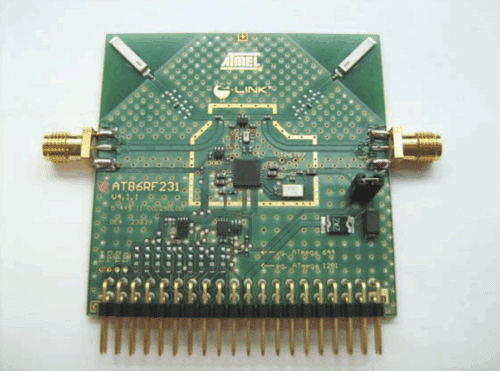The reference design enables engineers to build and test a network node with automatic antenna switching, improving signal reliability in wireless environments.

Antenna Diversity (AD) is a transmission technique that uses multiple antennas to send or receive signals through different propagation paths, reducing the effects of multipath interference. Multipath propagation happens when signals reflect, refract, or scatter off obstacles such as walls and surfaces, causing multiple versions of the same signal to arrive at the receiver with different phases and amplitudes. This causes changes in the received signal strength, known as fading, which can reduce link quality and lead to more errors or loss of connection. Using Antenna Diversity helps improve the reliability of RF links between network nodes in such conditions. The reference design from Microchip showcases a fully functional network node built around the AT86RF231 radio transceiver, capable of running a complete MAC layer implementation.
Using this reference design, design engineers can build a network node based on the AT86RF231 transceiver that supports a MAC layer implementation, allowing them to implement and test antenna diversity techniques for signal reliability. They can use the design to control antenna switching through the differential pins and external RF switch, optimize antenna placement to ensure uncorrelated signal paths, and develop firmware that uses the transceiver’s autonomous antenna selection during signal synchronization. This enables engineers to evaluate performance in multipath environments, customize the design for specific applications, and improve the connectivity of their wireless networks without increasing transmit power or adding hardware amplification.
The AT86RF231 radio transceiver includes an Antenna Diversity feature to control two antennas and select the best RF signal path automatically. This uses a pair of control pins to manage an external RF switch that switches between antennas. When the AD algorithm is enabled, the transceiver switches antennas during the Synchronization Header (SHR) search phase without microcontroller action. Antennas should be separated to ensure signals are independent.
When in receive mode, the AD algorithm locks onto the antenna detecting an SHR signal above a threshold and uses it to receive the rest of the frame. If the signal is low, the algorithm continues searching on the other antenna until a signal is found or the receive state ends. This process helps maintain communication in changing environments.
Using Antenna Diversity increases the chance of connecting to a network node and prevents nodes from becoming unreachable due to fading. This improvement happens without raising transmit power or adding low-noise amplifiers. The AT86RF231’s Antenna Diversity feature provides a solution to improve network reliability.
Microchip has tested this reference design. It comes with a bill of materials (BOM), schematics, assembly drawing, printed circuit board (PCB) layout, and more. The company’s website has additional data about the reference design. To read more about this reference design, click here.









